BROOKLYN













Combining the characteristic, dazzling lights of New York City with rustic realness and authenticity, Brooklyn has a close-knit community feel on a metropolis scale
WRITER: LUCY PILGRIM | PROJECT MANAGER: KRISHA CANLAS
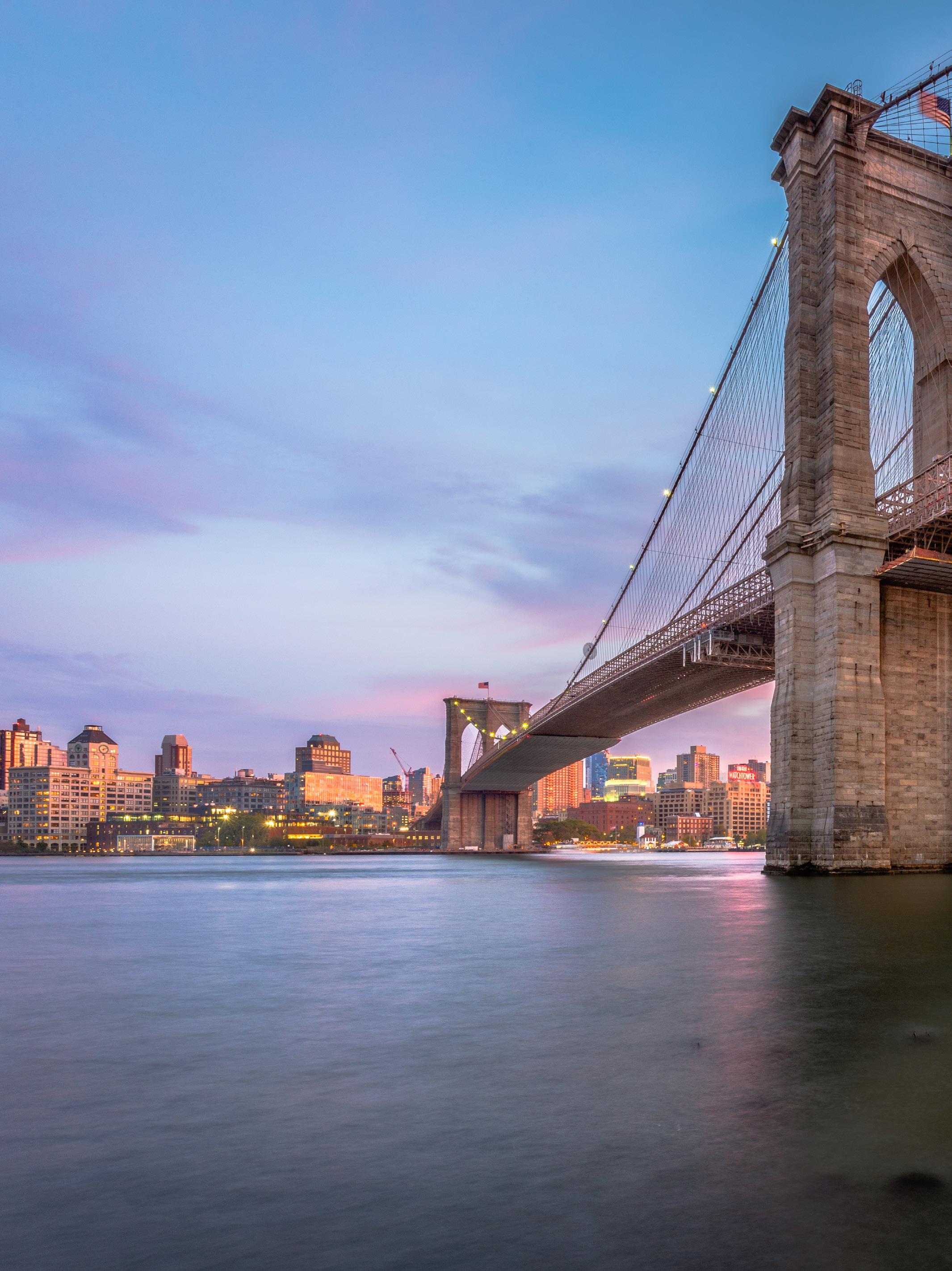
As New York City’s most populous borough, Brooklyn is one of the city’s most vibrant and enticing areas.
A celebration of diversity and community, its streets are bursting with hope and warmth as the city proudly celebrates its vast heritage, home to a melting pot of cultures.
Brooklyn comprises 51 energetic and charming neighbourhoods, each with a distinctively unique character that is well worth exploration. As arguably one of the most famous areas – and for good reason - take a gander down the cobbled streets of Dumbo to catch a glimpse of the iconic Brooklyn Bridge, perfectly framed by the area’s beautiful and ornate brownstone architecture. However, visitors to the borough should also go beyond
the major tourist spots to immerse themselves in the undeniably authentic atmosphere that can be felt up and down Brooklyn’s every sidewalk.
If you’re craving to find out more beyond the famed bridge, take the train to Cobble Hill with its historical and bohemian feel, derived from its time as the landing spot for Dutch sailors in the early 1600s. Today, the district is selectively sprinkled with art galleries, independent cafés, downtown bars, and a famed Antique Row with endless shops that are calling out to be explored.
Meanwhile, if the heavily populated nature of Central Park across the river proves to be too crowded, wander around the picturesque Prospect Park. Created by the same visionary designers as its Manhattan counterpart,
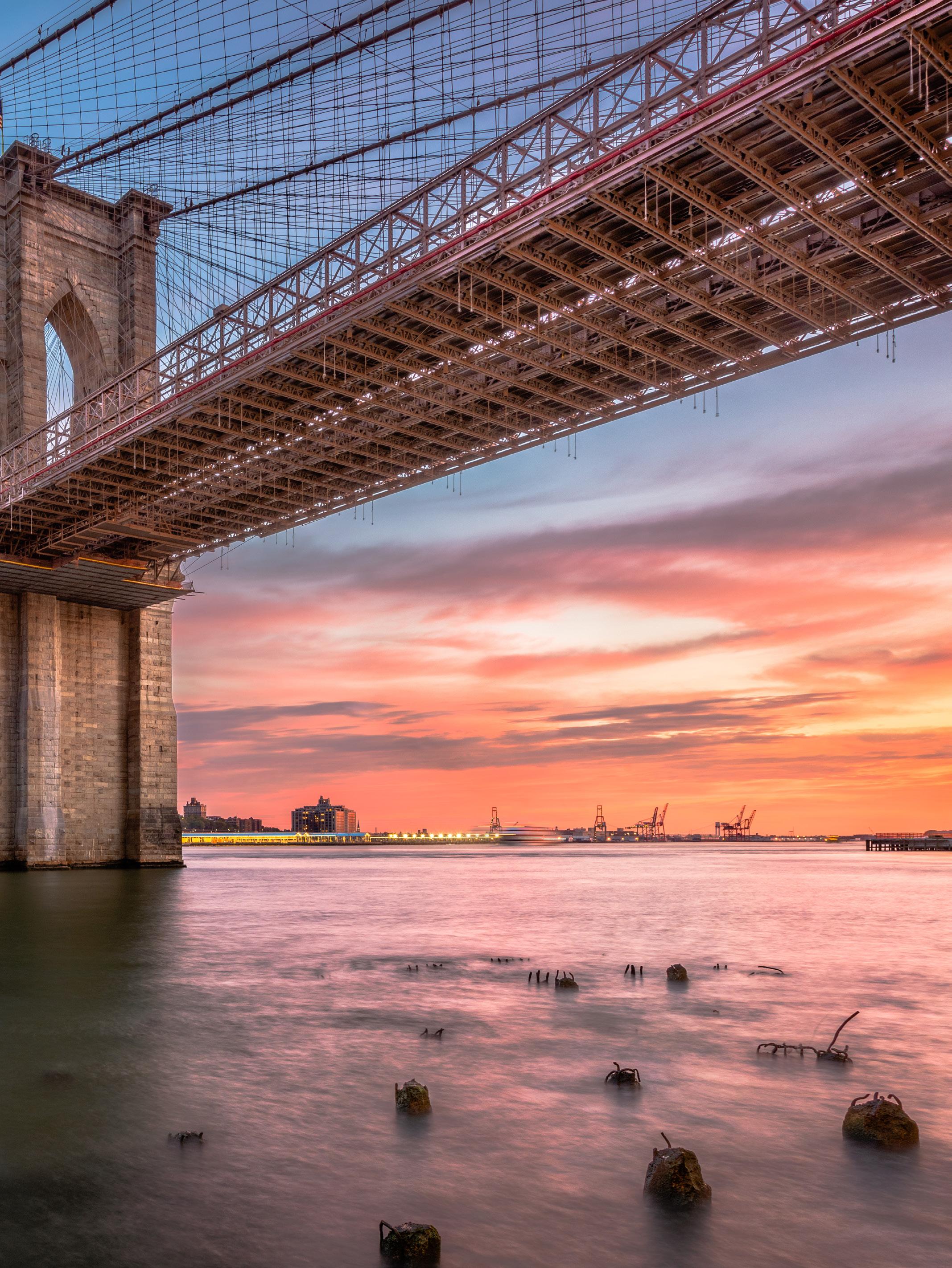
Prospect Park features the ideal environment to soak up the sun, with an abundance of picnic areas, a forest known as the Ravine, and even a zoo.
After a day of sightseeing, venture into Brooklyn’s bar scene that emits a trendy and sophisticated vibe, allowing visitors to feel like they are on a movie set, whilst its unpretentious and hearty dishes can curb any cravings, from the infamous hot dogs of Coney Island to the delightful thin, crispy crusts of Brooklyn pizza, alongside many more eye-opening, international cuisines.
To truly experience New York City in all its glory, make your way to the culturally rich and delightfully atmospheric streets of Brooklyn and engross yourself in the best this unique metropolis has to offer.
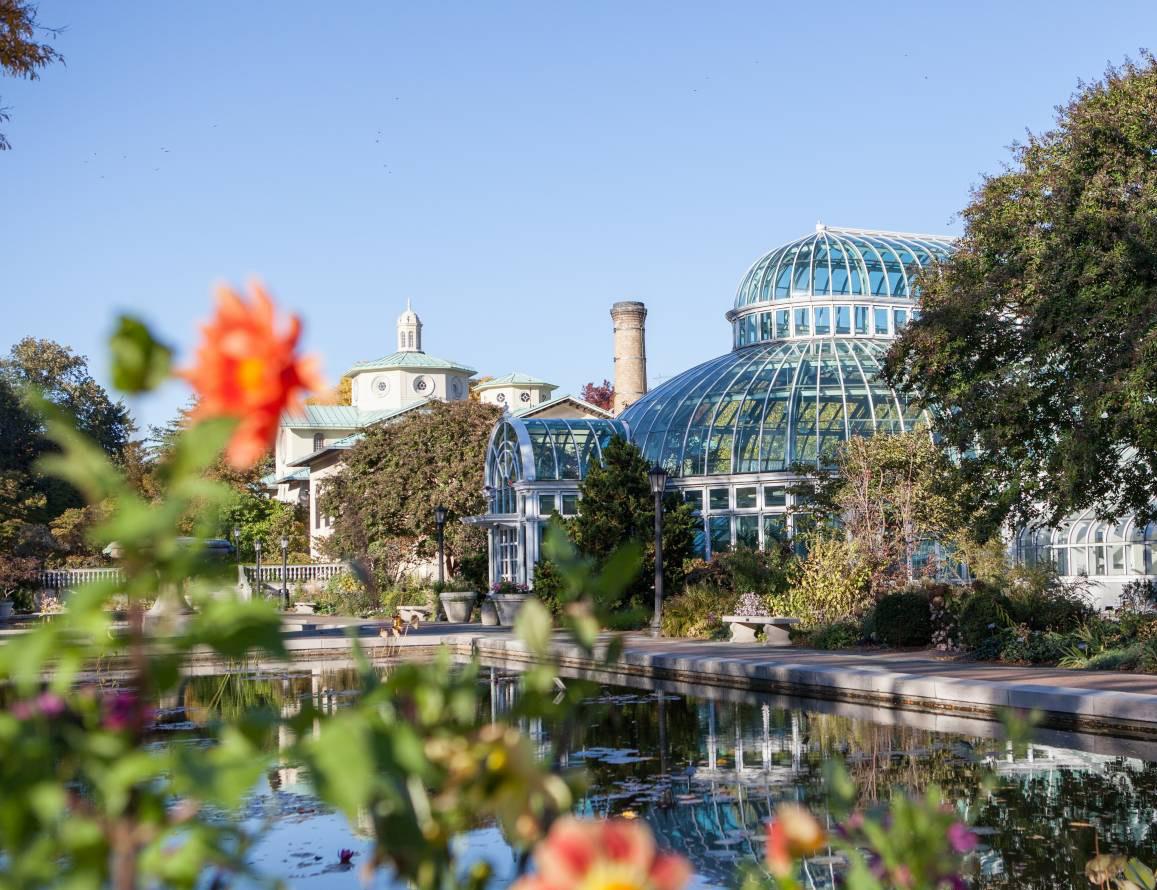
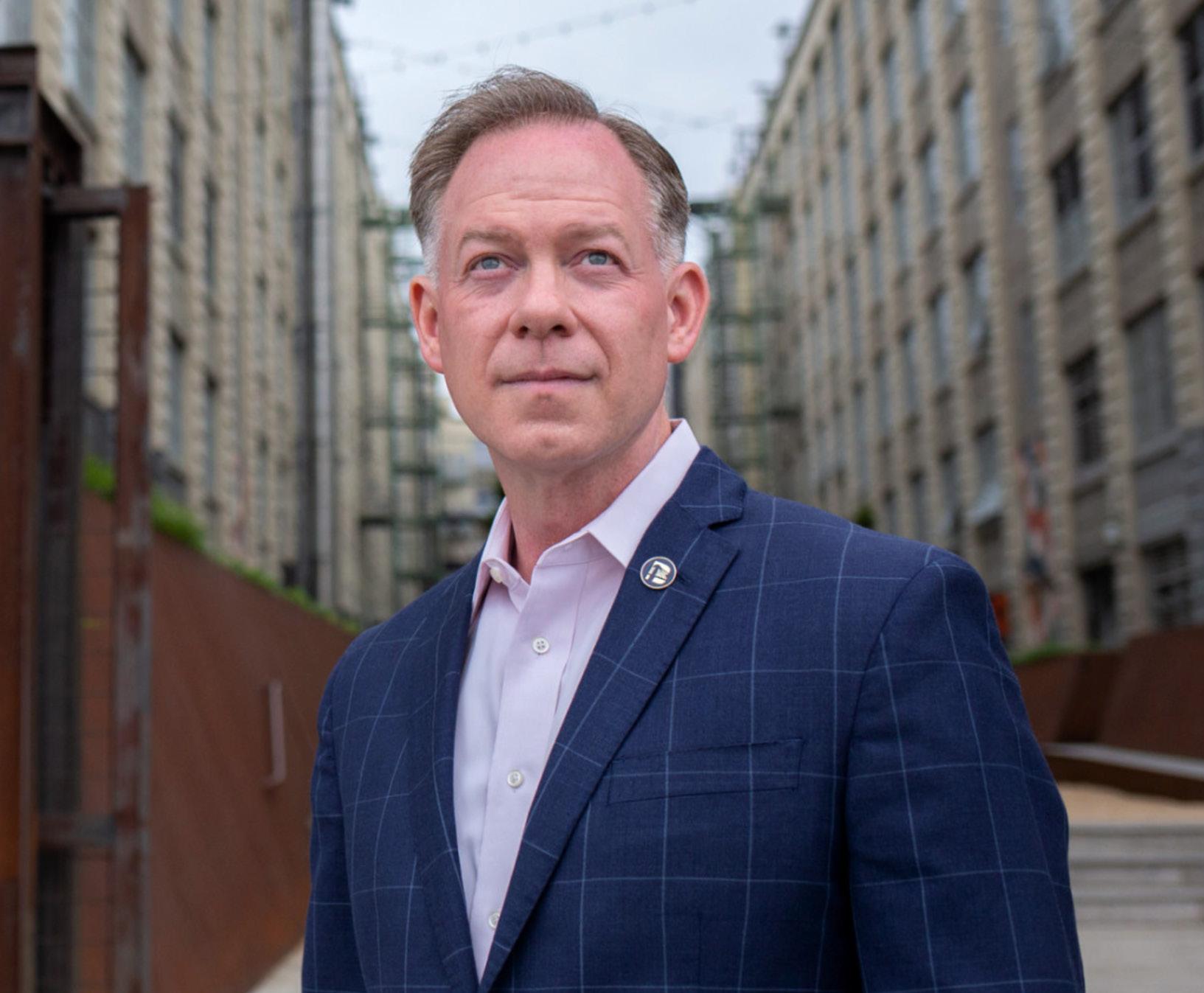
FOR OVER A century, the Brooklyn Chamber of Commerce (BCC) has championed the voices of both big and small businesses as it continuously works to be a loyal protector and promoter of their interests. The chamber is characterised by an active civic spirit to ultimately improve the living conditions and social welfare of Brooklyn’s bustling corporate landscape, whilst also highlighting its lively tourism sector.
We speak to Randy Peers, President and CEO of the BCC, about his passion for the borough and how its small businesses are the true beating heart of the city.
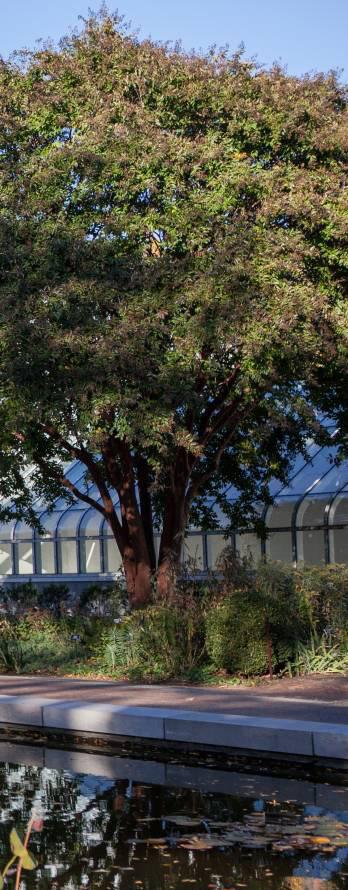
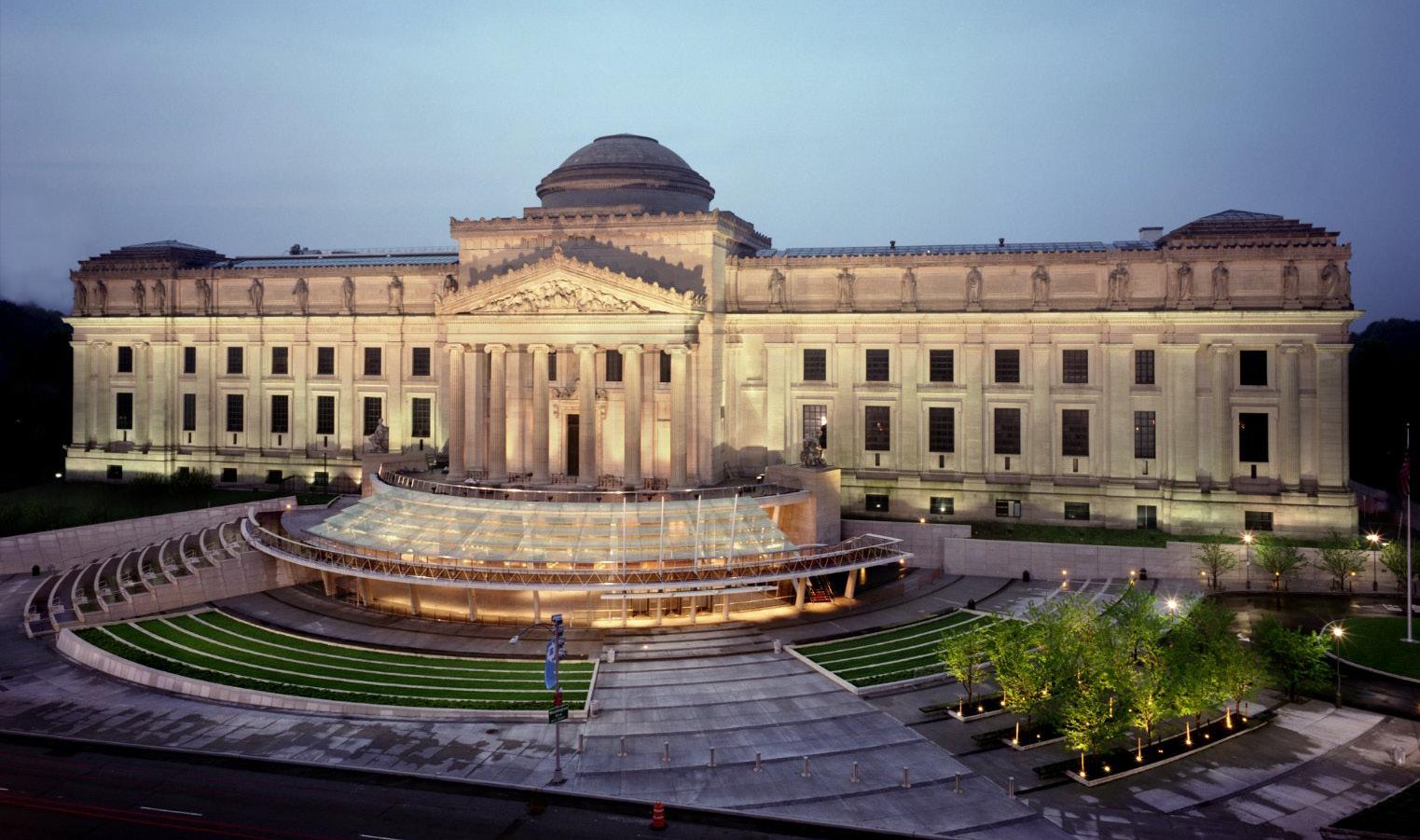
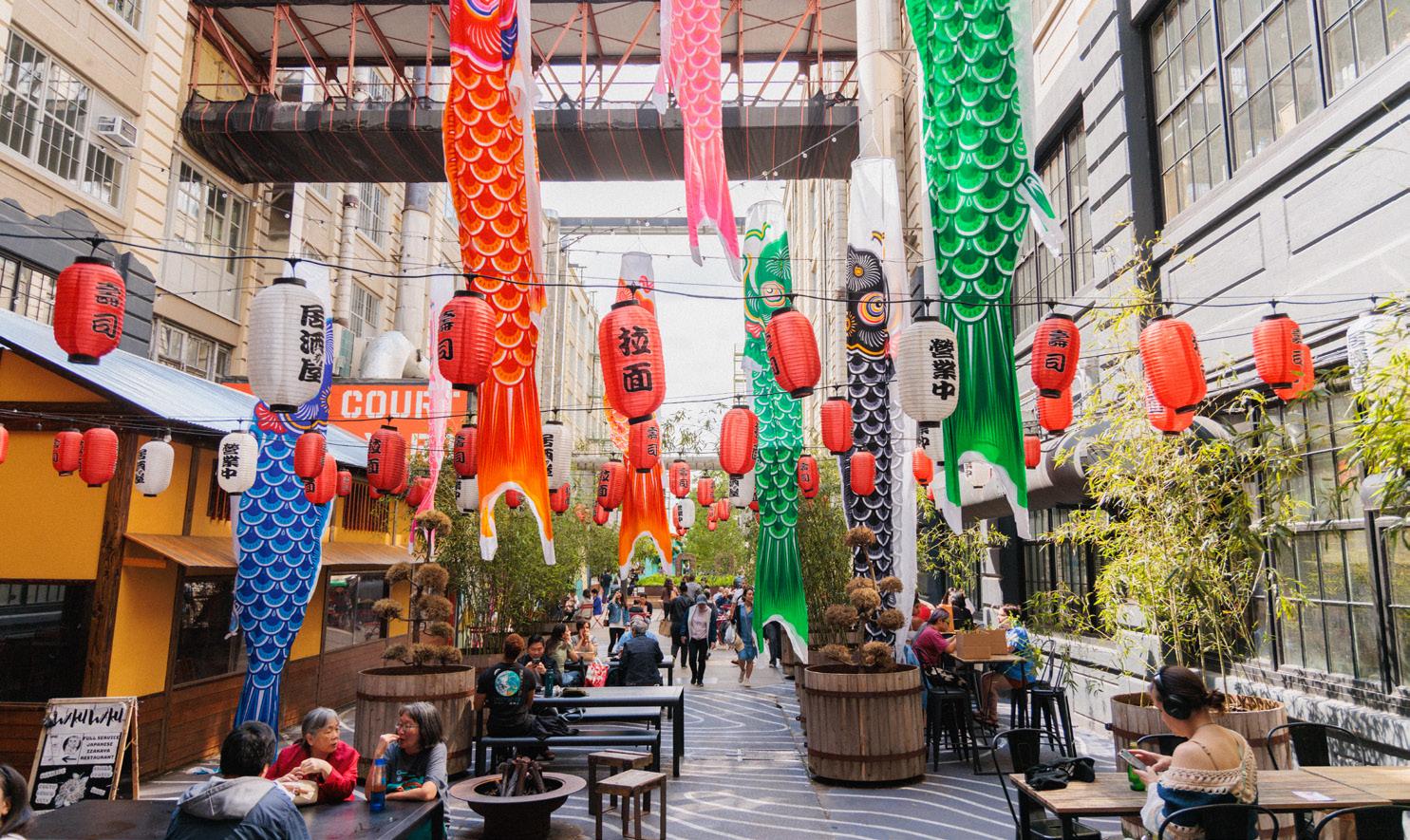
Outlook Travel (OT): Firstly, can you talk us through the origins of the BCC alongside its initial vision and current goals?
Randy Peers, President and CEO (RP): Established in 1918, we are the voice of the Brooklyn business community. Our mission has been consistent over the past 106 years – to be the borough’s chief advocate for development and support, as well as economic growth.
Initially, we were known as the Brooklyn Civic Club, however, about six or seven years after our formation, we transformed into our current guise. The borough has a small business economy with approximately 62,000
entities, 84 percent of which have less than 10 employees. Therefore, these companies don’t always have a say in what’s happening around them, so BCC seeks to be that consistent voice for the small business community, advocating for the things that matter to them.
OT: What makes Brooklyn a good place for visitors to invest in?
RP: We have become an international brand in recent years; if you go almost anywhere in the world and mention Brooklyn, you will find somebody who wants to visit or live here. It’s even been said that one in seven people can trace their roots to Brooklyn!
Historically, the borough was founded over 300 years ago by Dutch explorers, so we’ve had an interesting trajectory throughout our heritage. The story of Brooklyn is really wrapped up in successive waves of immigrants who have made the area their home and left an imprint on the culture and vibrancy of the city. As such, we have always been a very welcoming and tolerant region for anybody wishing to come here. For a long time, we were also the manufacturing centre for New York City, however, like most heavy industry areas after World War II, there was a decline in the level of manufacturing.
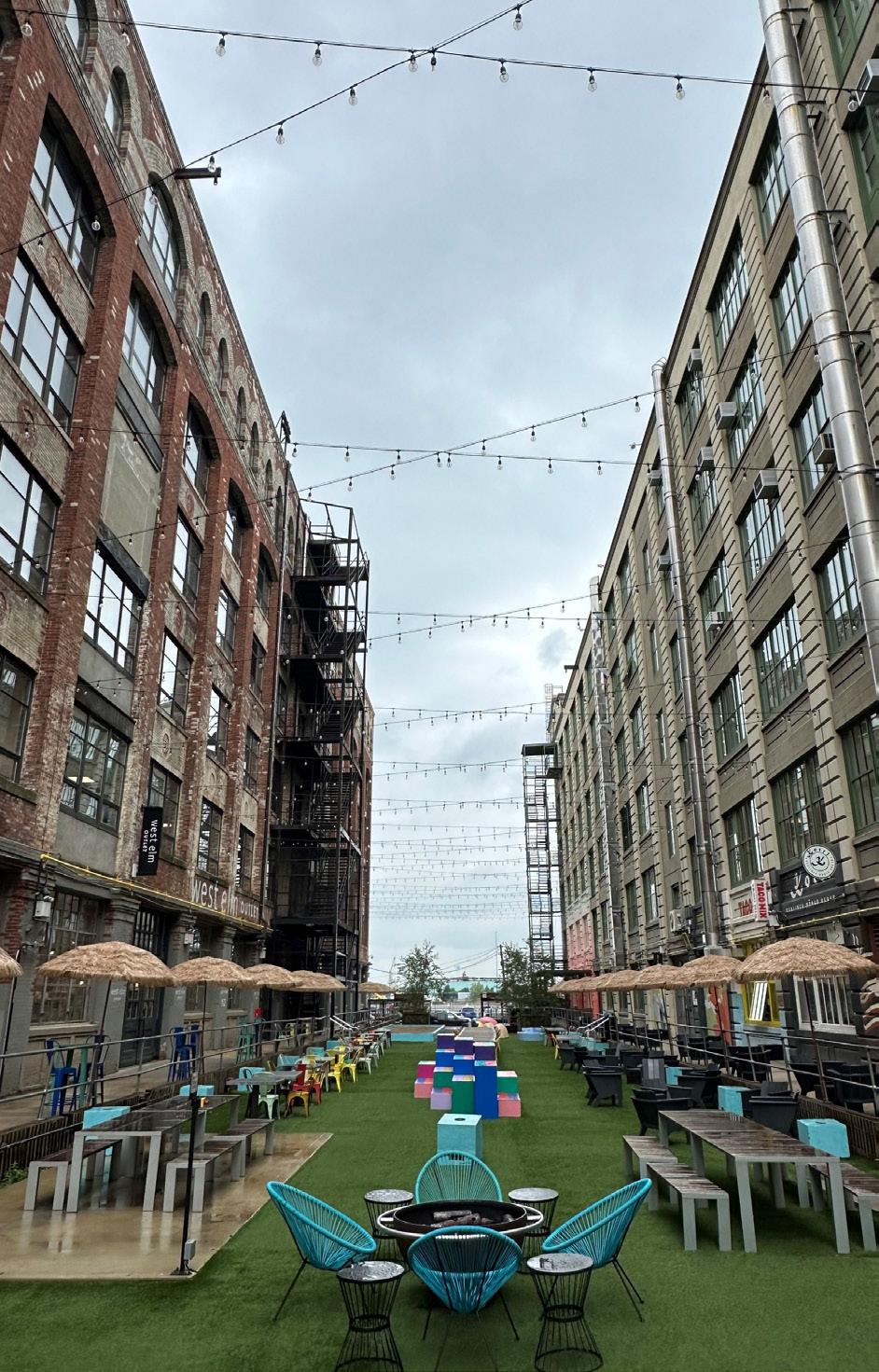
Subsequently, it took us a good 30 years to get back on our feet. However, we had a number of advantages; the first was our branded identity – people knew where Brooklyn was. Although the brand was somewhat tarnished during the 1970s and 1980s, as the borough was seen through a lens of urban decay and increased crime, we still had a distinctive identity. Therefore, the idea was to change the narrative so that what was once considered dangerous became edgy and hip in a simple form of rebranding.
More importantly, we had all this former heavy industrial land that could be repurposed for creative and new economy industries. This land has now been revitalised for both
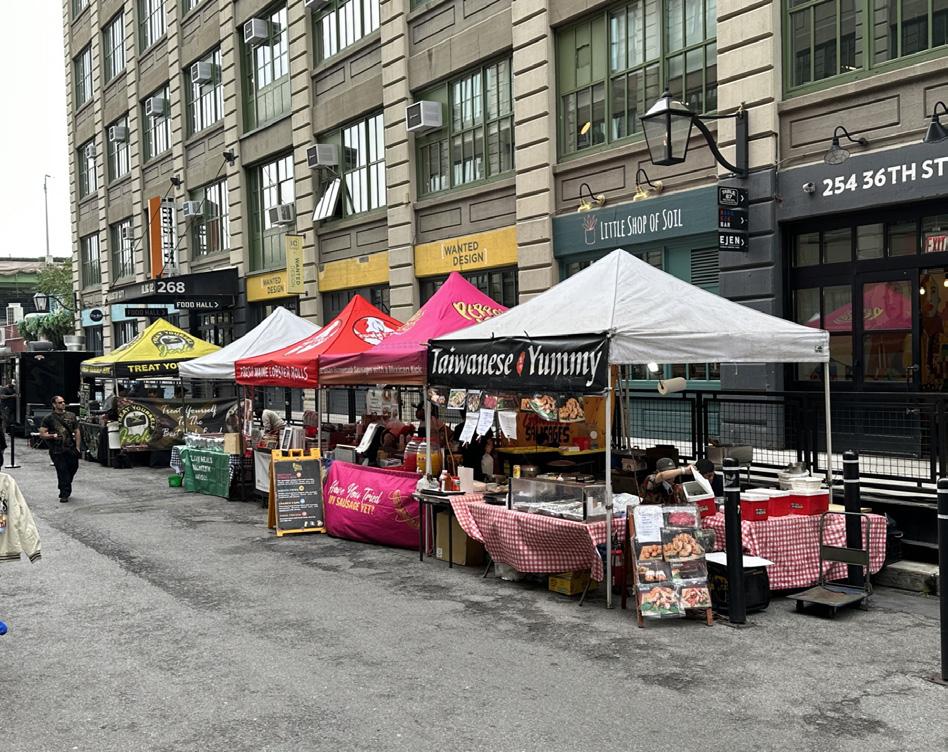

residential and commercial uses. For example, if you look at the north of Brooklyn, in places like Williamsburg, Dumbo, and Greenpoint, a lot of that land has been converted from former manufacturing uses to residential.
Meanwhile, if you look at neighbourhoods like Industry City, Sunset Park, Brooklyn Navy Yard, and Brooklyn Army Terminal, these are commercial spaces that have been transformed for the creative economy. This includes tech companies, marketing and design firms, and niche, small manufacturing industries such as food manufacturing.
We’ve really transformed our economy by repurposing former industrial spaces and rebranding the story of Brooklyn.
OT: How important is the BCC to the growth of the borough’s businesses, and how do you achieve this?
RP: We’re the largest chamber of commerce in the state of New York and have four primary foundational principles: promotion, support, advocacy, and convening.
Our success lies in our ability to tell our businesses’ stories so they can receive greater exposure and sell more products and services. We do this by leveraging our communication channels, such as e-newsletters, networking and ribbon-cutting events, and social media, which all come under the promotional umbrella.
Regarding our support services, the BCC has always been at the forefront

of providing technical assistance and we have several programmes that focus on helping small businesses to form and grow.
These include our NYC Business Solutions Center, a small business resource network, as well as our financing arm, Brooklyn Alliance Capital, a microlender that provides all levels of technical assistance, whether it’s marketing support, access to financing and legal services, minority and women business certification, and connecting to government agencies for regulatory purposes.
We’ve held a lot more of these programmes since the COVID-19 pandemic, as it obviously had an impact on many smaller companies. Meanwhile, advocacy is our bigpicture policy and involves the legislative work that we do on behalf of local entities. We regularly interact with our elected officials and policymakers to serve as a voice for these companies. For example, when legislation or policies impact small businesses, we articulate what the issues and concerns are.
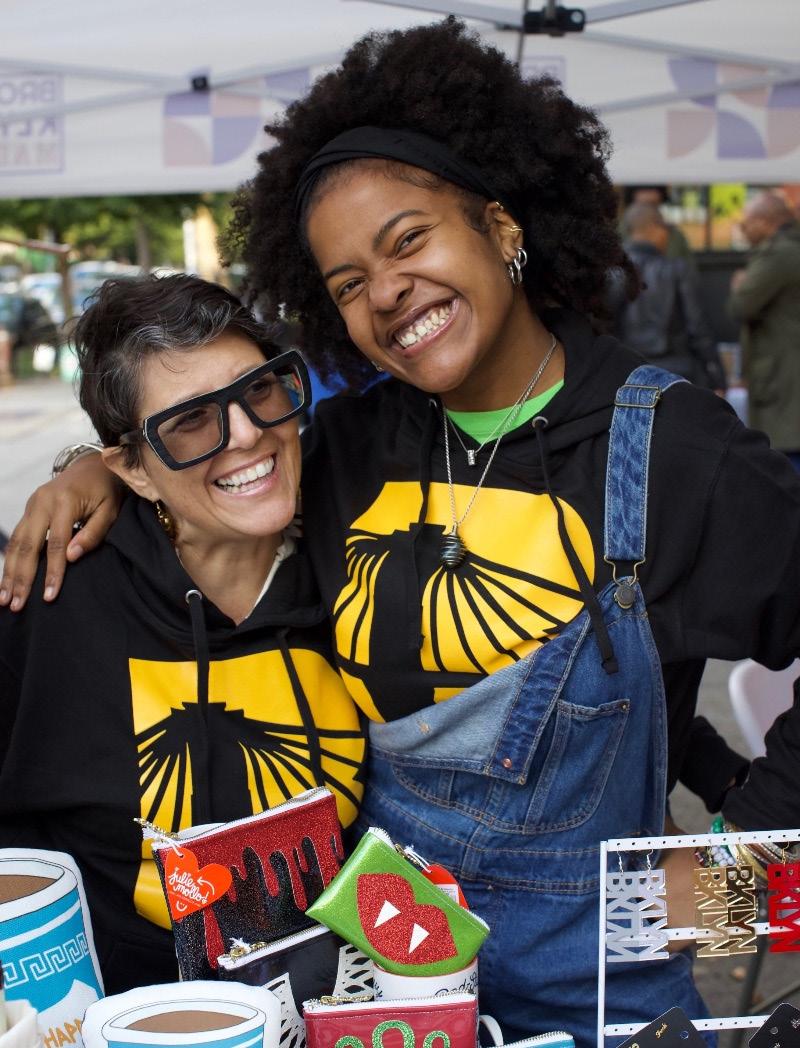
“We’ve really transformed our economy by repurposing former industrial spaces and rebranding the story of Brooklyn”
– RANDY PEERS, PRESIDENT AND CEO, BROOKLYN CHAMBER OF COMMERCE
As Brooklyn is one of the largest counties in the state of New York, it has a great number of representatives, which means we have a strong number of elected official delegations. Therefore, the BCC interacts with all levels of government, city, state, and federal agencies on behalf of our businesses.
Finally, convening is about bringing people from each industry together around the table. For instance, we manage the Tourism Council for Brooklyn, alongside other industrybased committees, such as real estate, development, healthcare, BioTech, and energy. We bring these industries of the local economy together so that we can work on collective issues with a particular sector.
OT: How has the tourism industry in Brooklyn changed in the last five years?
RP: The good news is that tourism in New York City has bounced back quite nicely following the COVID-19 pandemic. There were 62 million
visitors to the city prior to the event, 15 million of which made it over the bridge to Brooklyn, making it the second most visited borough out of the five.
However, there have been some shifts in the post-pandemic era. For example, we’re not getting as many international tourists as we once did, particularly from China and Russia, but we are seeing more day trippers visiting from the tri-state areas to see Brooklyn’s attractions. In terms of numbers, we’re pretty close to the 15 million visitor mark which was our watershed high before the pandemic.
I would also say that despite Brooklyn’s huge size, many tourists tend to stay in the northern areas closer to Manhattan. Here, you can find hot areas such as Williamsburg and Dumbo located beneath the Manhattan Bridge underpass.
I would also encourage visitors to see other parts of Brooklyn, such as in the south and east. For example, Coney Island is the original ‘People’s Playground’, with its brilliant beach and wonderful boardwalk, as well as its remarkable amusement rides and attractions.
Brooklyn also has historic locations such as the Weeksville Heritage Center. As Weeksville was one of the first free Black communities in the post-Civil War US, this historic neighbourhood is an amazing place to visit.
I would also encourage travellers to spend time in one of the many immigrant communities that we have. You can go to Brighton Beach and feel like you’re in Ukraine or go to parts of Sunset Park and feel like you’re in Latin America or China. We also have an area called Little Caribbean, a vibrant community representing the many wonderful nations of the islands. Due to the rich mix of cultures, we have many authentic restaurants across the borough. We like to eat in Brooklyn, and it’s all about coming together around food; as such, our restaurant scene has really progressed to rival even the top restaurants in Manhattan.
OT: Please tell us more about your annual events for members and how you incorporate popular attractions?
RP: We hold a lot of what we call ‘big ticket’ events, which recently included
our Black History Month celebration held at the Weeksville Heritage Center in February. This is an amazing event where we honour some of our business and civic leaders from the African American community here in Brooklyn.
We also had an Asian-American History Month celebration on 23rd May in Industry City, which comprised a night market with lots of food vendors as well as cultural performances across the area. We hold other more industry-specific events for the not-for-profit (NPO), energy, and real estate sectors, alongside our gala.
We also have our Brooklyn Made Store that we opened over a year ago in Industry City, which has become an amazing tourist attraction in itself. It is super unique for a chamber of commerce to have its own store, and we are proud to feature independent Brooklyn makers, designers, and small business owners who wouldn’t necessarily get this type of exposure.
The products we sell include packaged food, apparel, home goods, make-up and beauty supplies, and jewellery, as well as an art gallery


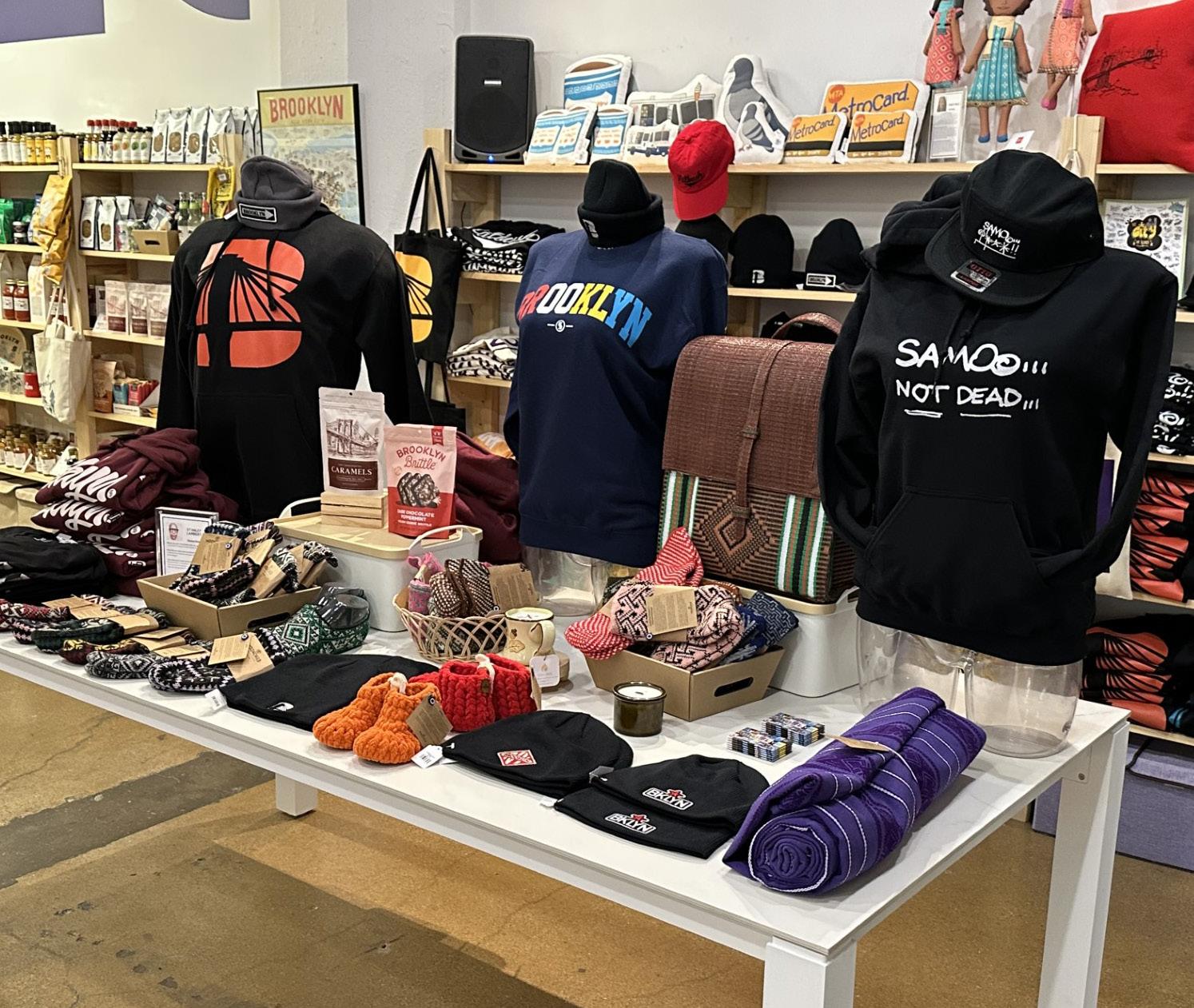
with rotating exhibitions called the Brooklyn Made Corner Gallery.
Industry City is a former heavy industrial campus spanning six million square feet that has been repurposed for the creative economy and retail sectors. It’s a work-play environment – there are food courts, restaurants, distillers, and Li-Lac Chocolates, one of the oldest chocolate makers in the state, alongside the Brooklyn Made Store, where we often hold events.
These initiatives highlight Brooklyn designers and creators who are from diverse communities. In fact, 83 percent of products on the shelves are made by minority and women-owned makers, designers, and business

“We’ve taken on a global role to help our businesses locally and leverage the Brooklyn brand on a worldwide scale”
– RANDY PEERS, PRESIDENT AND CEO, BROOKLYN CHAMBER OF COMMERCE
owners. As such, we recently held an event for Women’s History Month to celebrate these creatives.
OT: In what ways does the BCC put the borough on the map for international visitors?
RP: We have an international division of the BCC to conduct trade shows and exportation work on behalf of businesses who want to open up their markets overseas.
Our next step is leveraging the Brooklyn brand globally by working with foreign delegates, having held 38 delegations so far. What’s great is that delegates now come to New York City and visit the BCC to find out more

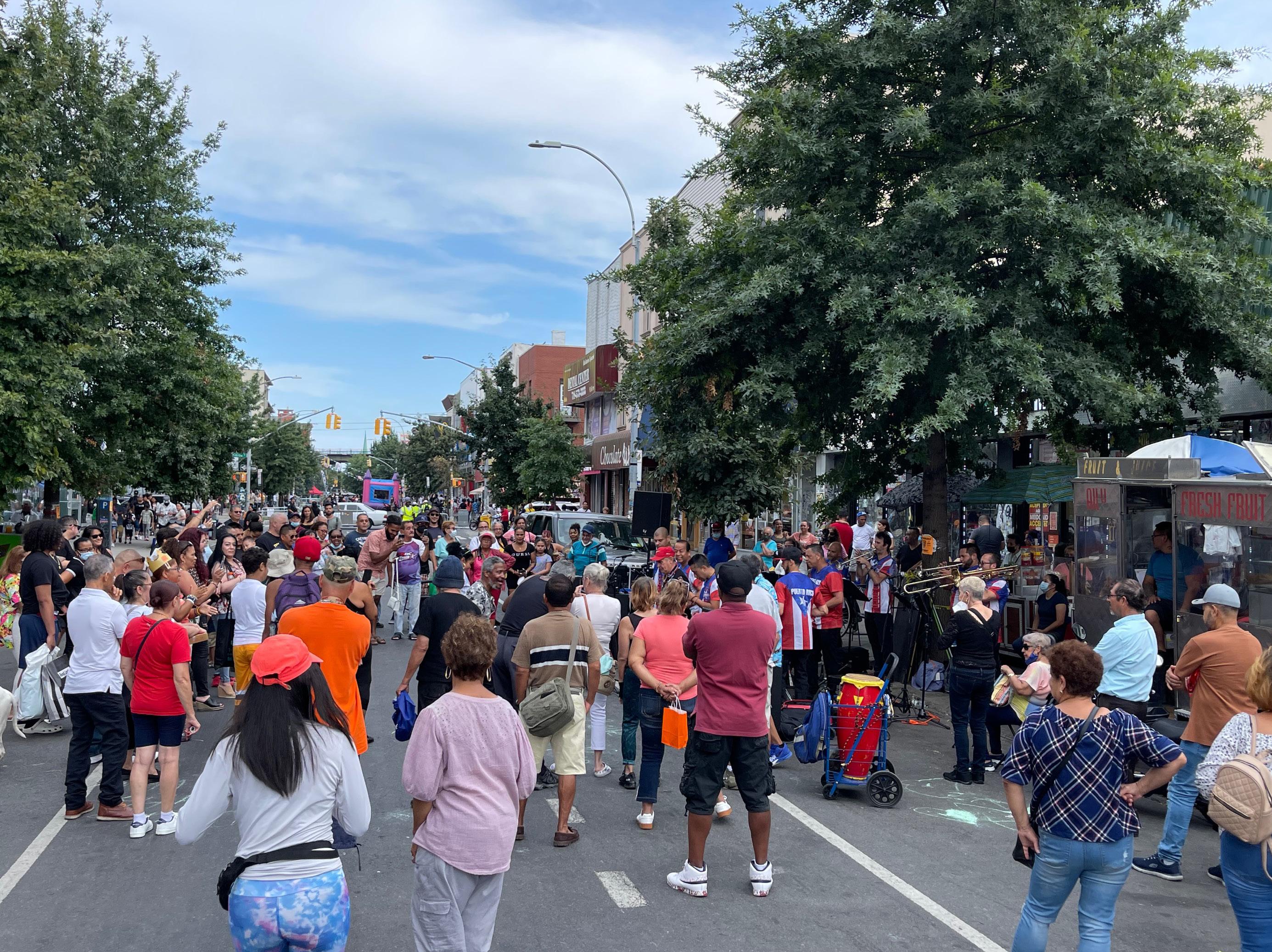
about the area. We generally roll out the red carpet and talk about all the wonderful things the borough has to offer, which they then take back to their home nations.
We collaborate frequently with South Korea and the city of Seoul, in particular. There’s actually a neighbourhood in the city called Seoungsu-Dong, which is known as the Brooklyn of Seoul.
We also work with Korean entrepreneurs who want to test their products in the US. Known as proof of concept, we help embed their products in Brooklyn-based companies so they can be analysed in the wider marketplace.
This is also an example of how we’ve taken on a global role to help our businesses locally and leverage the Brooklyn brand on a worldwide scale. Our international division’s tagline is ‘Brooklyn - a bridge to
the world’ in reference to the iconic Brooklyn Bridge.
OT: Finally, how does the organisation support local businesses to provide an authentic experience for visitors?
RP: We’ve started to notice many more visitors venture to smaller neighbourhoods seeking the authentic Brooklyn experience.
Rather than exclusively going to see popular cultural attractions like the museum, they want to experience the unique commercial corridors that reflect the immigrant and ethnic communities we have here. They also want to eat in small and intimate restaurants – we’ve got real, momand-pop, homegrown food, so why would you dine anywhere else?
Similarly, we have many supersmall businesses for people to enjoy. I encourage visitors to go to
Tompkins Avenue because many of the companies are owned by Black female entrepreneurs. Whether it’s food or fashion, they put on a big ‘Open Streets’ event every summer where they close the road to hold a street fair, so travellers can experience the real Brooklyn.
We’ve really got it all here – a short walk of just a few blocks and it can feel like a completely different place. We encourage visitors who are seeking out an authentic experience to visit the Brooklyn Made Store and we can link them to the different parts of the borough that they want to see.


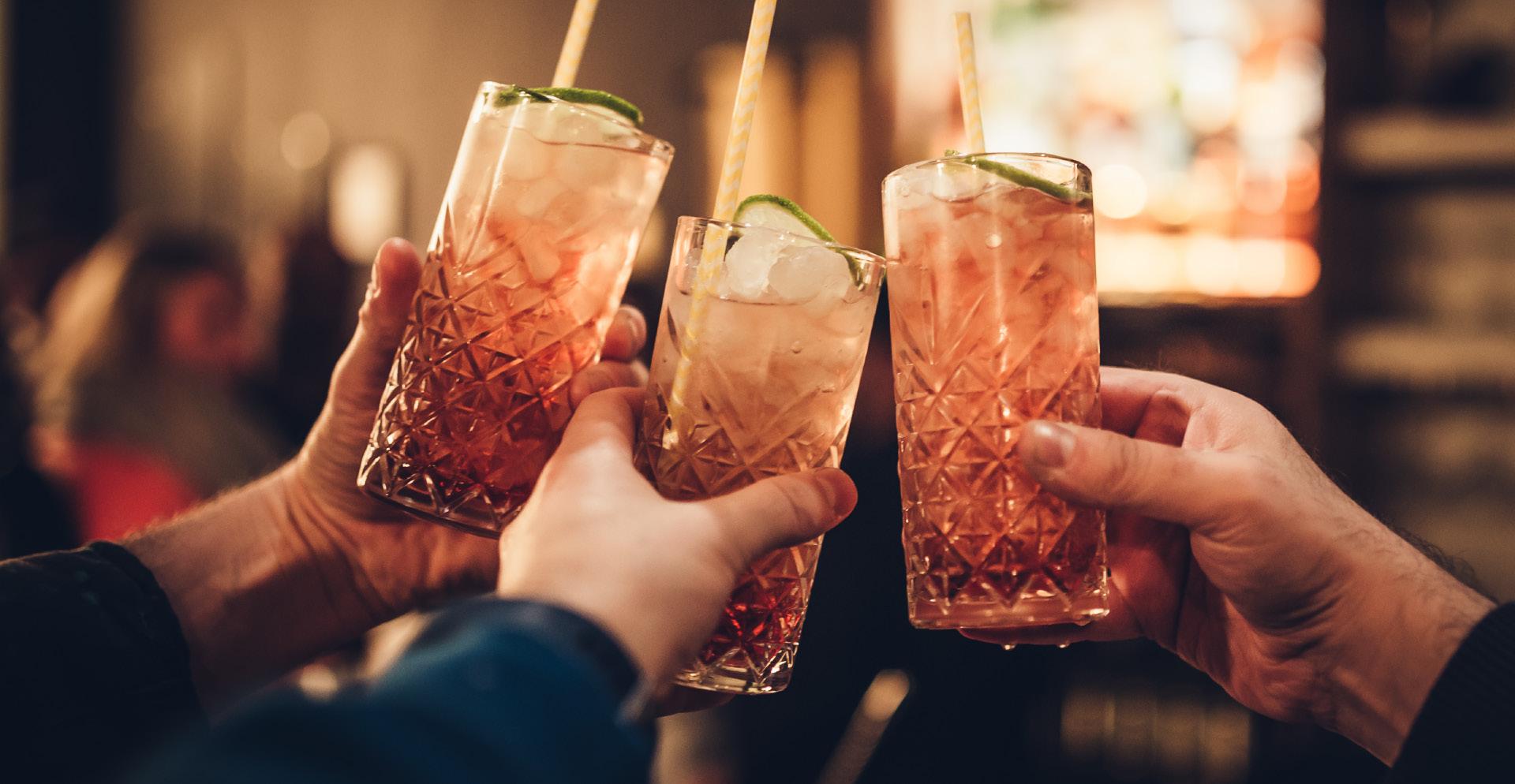
New York’s destination for eating and drinking, featuring the city’s top chefs, most-talked-about restaurants and the buzziest bars - plus the latest in arts and culture all huddled together under one roof. What happens when a slick media company endeavors to bring together the best of the city under one roof? You get Time Out Market, a diningand-culture experience curated and vetted by our editors.
It’s a concept our Time Out Portugal team created in 2014, then launched inside the city’s historic market, Mercado da Ribeira. With eight bars, a dozen shops, a high-end music venue
and 24 restaurants—from the best burger spot and the top steak joint to the tastiest sushi sensation— Lisbon’s finest eateries are all represented. This unique mix of traditional and trendy is

something you’ll find only at Time Out Market Lisbon. Across the Atlantic, Time Out Market New York picks up the baton and introduces Gotham to its own version of this tried-and-true concept right in the heart of Dumbo.
Spread across 24,000-squarefeet, the curated dining destination packs multiple eateries, three bars, a
fifth-floor rooftop and art installations into one space that encompasses the best food, drinks and culture that New York has to offer.
As in its predecessors, the New York outpost follows a simple rule when it comes to curation: If it’s great, it goes on the site; if it’s unmissable, it goes in the Market. A meal at Time Out Market New
York means you’re truly digging into NYC’s most delicious dishes, cooked by the most exciting talents in the city. What you’ll find inside is a hand-selected array of everything you could want to eat, drink and see in the greatest city in the world, all under one roof.


Everything you love about New York City’s best bars can be found at Time Out Market: cocktails worthy of a hidden speakeasy, panoramic views of the skyline to end your (work-from-home) day. Just like our curation of eateries, we’ve put in just as much thought when it comes to building our bar. Some of the city’s best bartenders were behind us on Day One with Instagrammable libations and today, the creativity keeps flowing we dare you to order just one.
Wayla was already poised for stardom shortly after first opening its doors on the Lower East Side in 2019, when seemingly everyone in NYC was salivating over its noodle-wrapped meatballs, clamoring for tables and snapping selfies. Even now, years later, prime-time reservations for chef Tom Naumsuwan’s homestyle Thai food still aren’t easy to come by. His attention to ingredients, focus on fresh flavors and market-inspired menus have folks filling up Wayla’s tables night after night. Lucky for you, there’s a seat with your name on it right here.
When Jacob’s Pickles opened on the Upper West Side in
2011, it was one of the first truly cool restaurants in a neighborhood better known for its sleepy dining scene than hip eateries and bars. The back-to-basics menu was one we could get behind (goodbye, stale chicken wings and greasy fries). The Southern-focused spot specializes in comfort foods: Nashville hot chicken, biscuits, mac and cheese and, of course, pickles. Now we have a taste of down-home cooking, punctuated with a fried Oreo for dessert, right here in Brooklyn.
Sugar Hill Creamery owners Nick Larsen and Petrushka Bazin Larsen’s seasonal ice cream flavors are often inspired by their Midwestern and Caribbean backgrounds as well as their longtime home of Harlem. The husband-and-wife team has been crafting distinct ingredient combinations out of their Central Harlem store since 2017, and devoted fans hungry for frozen treats that you won’t find in the supermarket led the pair to open a second location in Hamilton Heights just a few years later. Stop by often—there’s always an innovative new flavor to try.
Positioned in the southernmost peninsula of Brooklyn, Coney Island is a treasure trove of good old-fashioned fun, adorned with the best amusements and entertainment the borough has to offer.
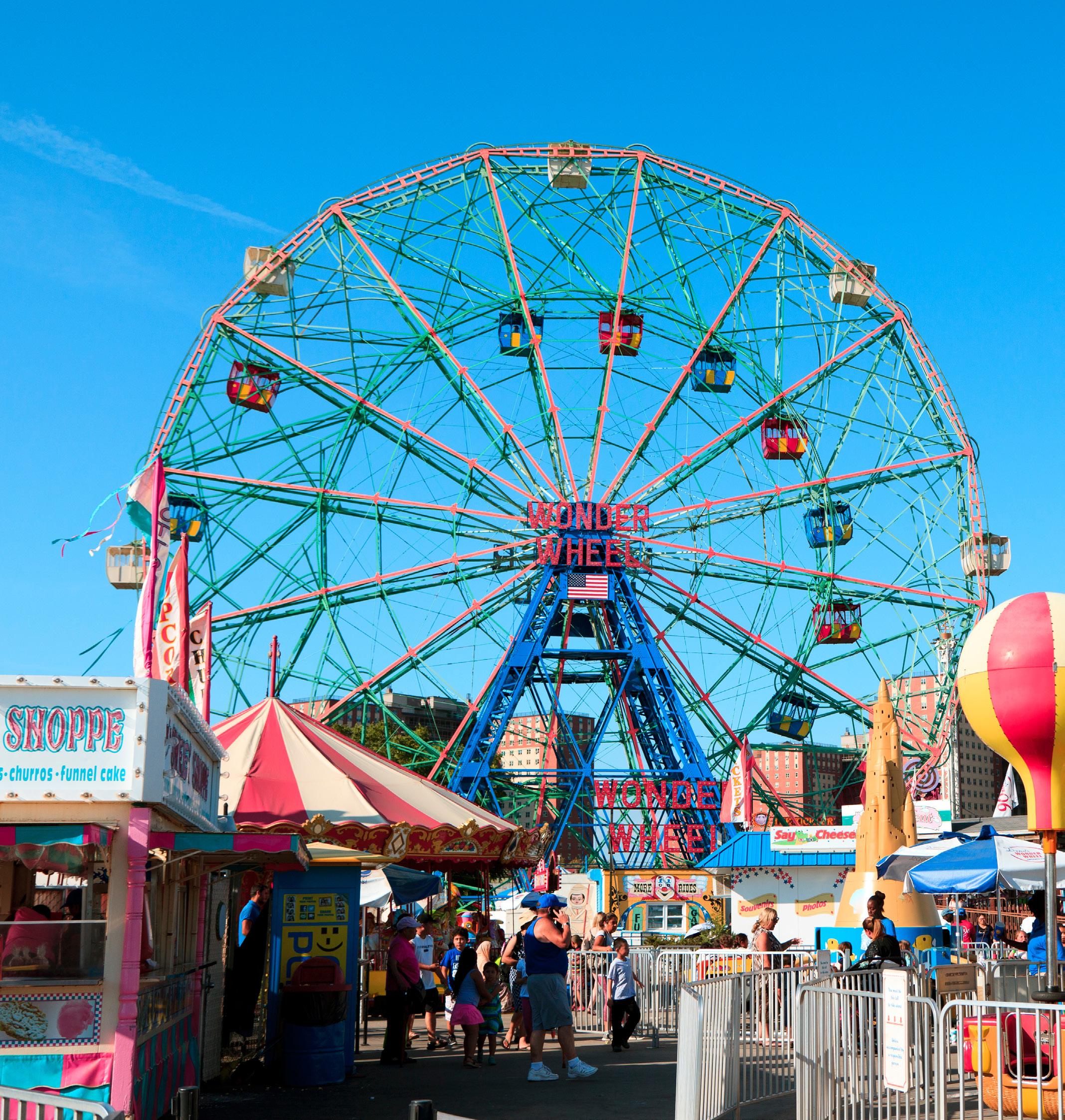

GENERATIONS OF FAMILIES sink into childlike nostalgia when visiting the site of the US’ oldest amusement park. Brought to life in 1895, Sea Lion Park was one of New York City’s biggest attractions before it was replaced by Luna Park, which remains an area of wonder and intrigue to this day.
As an emblem of Luna Park’s joyful heritage, avid thrill seekers can ride The Cyclone – a wooden rollercoaster that

reaches incredible speeds of 60 miles per hour, giving avid riders an exhilarating adrenaline rush.
If you’re looking for something on the more relaxing side, Luna Park also features the spectacular Wonder Wheel. Taking over 40 million people on a gentle journey since 1920, the famed Wonder Wheel has become synonymous with family fun and is the perfect way to see the whole of Coney Island’s coastline in all its glory.
Devoted carnival goers also cannot miss the Mermaid Parade, heralding in the long-awaited summer season with a wonderful kaleidoscope of colour that is a delight for anyone’s eyes. First held in 1983, it is the country’s largest art parade and gives local artists and creatives the opportunity to showcase their bright and bold interpretations of the ocean’s greatest creatures in all their nautical vibrancy.
From titans of the sea to legends of the land, Nathan’s Famous International Hot Dog Eating Contest takes this iconic American delicacy to the next level, as crowds flock to witness who can eat the most hot dogs in 10 minutes. Last year’s contest saw a seasoned veteran earn his 16th Mustard Yellow Belt after eating a staggering 62 hot dogs and buns. Taking place on 4th July every year, you have to see it to believe it.


FOR AN ECLECTIC HUB OF BROOKLYN’S MOST ADVENTUROUS FOOD CONNOISSEURS...
Time Out Market New York never misses, providing delightful platefuls of international and local cuisine amongst a lively and bountiful atmosphere full of Brooklyn’s biggest foodies. Whether it’s a relaxing post-office wind down with colleagues or the beginning of an action-packed night, Time Out Market New York has hundreds of restaurants that take you on a culinary journey.
With 21 highly unique food concepts, the market is home to some of New York City’s most highly-rated chefs and local restaurateurs, who each offer a handcrafted menu that has been personally taste tested and approved by the city’s top culinary experts.
Positioned in the centre of the lively Dumbo district, the market boasts three buzzing bars, the picturesque Roof Top Bar, and stunning art installations in and amongst the plethora of the most talked about restaurants across four floors.
Roof Top Bar has become one of the hottest event venues, accommodating the biggest parties with live acts, as well as the most intimate private dinners
with top-quality table service. Time Out Market New York also bestows regular, fun-filled events and gatherings, such as the expert-led Salsa Thursdays and Game Night Fridays that respectively grant action-packed foosball and endless laughs around the boardgame table.
To sample some of the best cuisine that not only Brooklyn, but the wider city has to offer, indulge yourself in the vibrant culinary creations of Time Out Market New York.

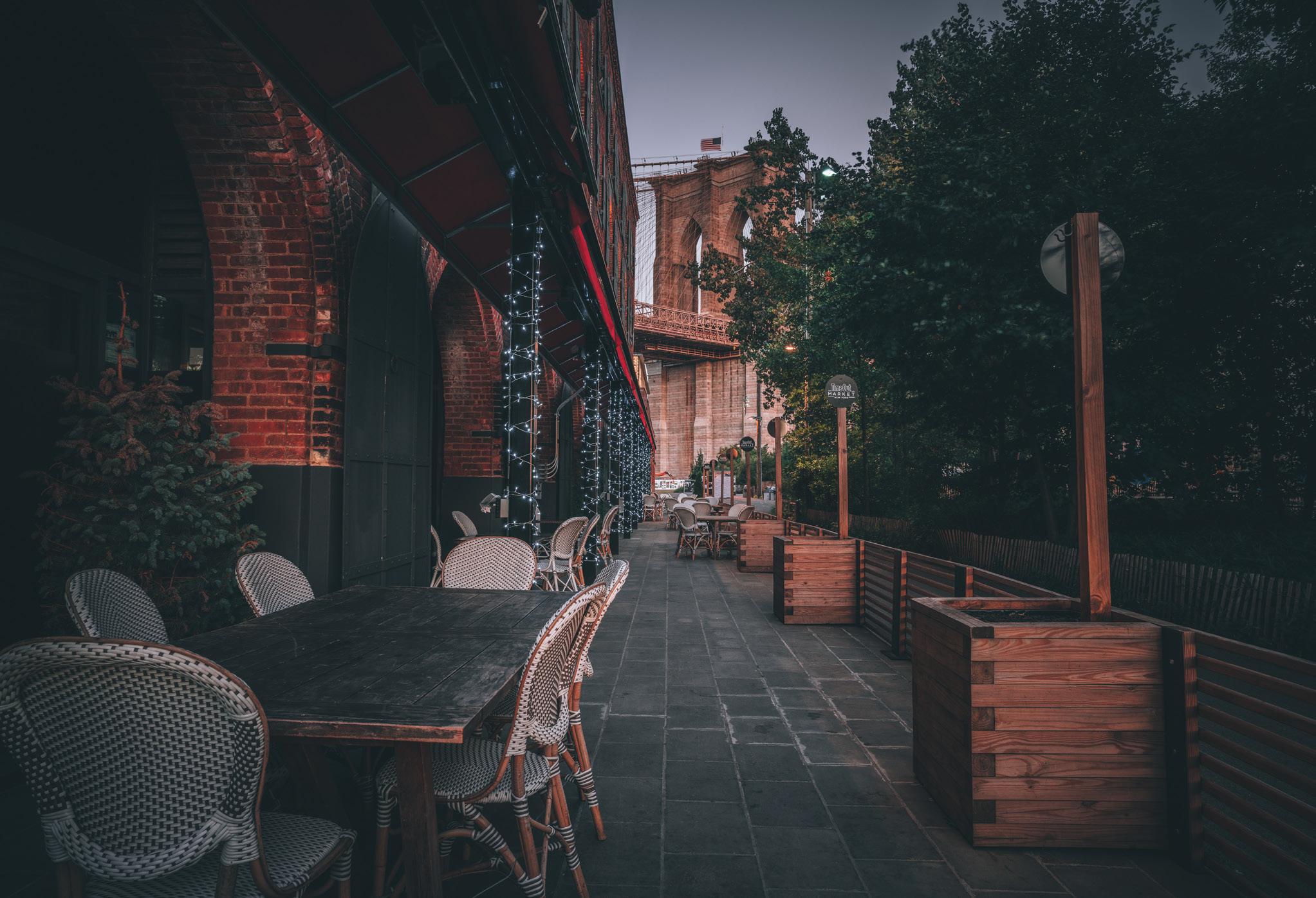
FOR UNLOCKING YOUR INNER FARMER AMONGST THE URBAN FLORA...
Brooklyn Grange is a top-of-the-range farming and intensive green roofing business that opens up the world’s largest rooftop soil farms to the public. The borough’s green-fingered innovators bring the soaring fields of the countryside to the bubbling activity of Sunset Park, highlighting the importance of green spaces amongst urban living.
Every Sunday, visitors to the area get the chance to see the grange in all its green glory. With free entry, agricultural lovers and budding farmers can rejoice in tours of the site, a flourishing farmer’s market, and some of the freshest food on offer in the local neighbourhood.
FOR A HOTEL STAY THAT LIVES AND BREATHES BROOKLYN’S INDUSTRIAL PAST...
Wythe Hotel is one the highest regarded stays in the city, as history lovers are attracted to the hotel’s riveting lineage. Located in the heart of Williamsburg, the original building was first opened as a cooperage

in 1901, manufacturing barrels for the borough’s thriving sugar refining industry.
Following its evolution into a textile factory throughout the 20th century, the building was eventually converted into a hotel in 2008. The hoteliers and architects worked hard to preserve as much of the original craftmanship as possible, so that structure wouldn’t lose any of its rustic charm.
With a vast range of rooms spanning 200 to 1,350 square feet, the spaces ooze industrial chic, with high wood panelled ceilings that provide a glimpse into the hotel’s history and vast windows letting in the brilliant Manhattan skyline. It is no wonder that guests of this magnificent boutique hotel always leave well rested and wanting more.
Created to preserve and celebrate Weeksville, one of North America’s first free Black communities, the centre’s fascinating teachings open visitors’ eyes to the importance of African American emancipation and empowerment through an intimate intersection of history, art, and culture. Guests can gain a glimpse into the lives of a community that has repeatedly pushed the boundaries of identity, making it a pillar of Brooklyn’s cultural diversity.

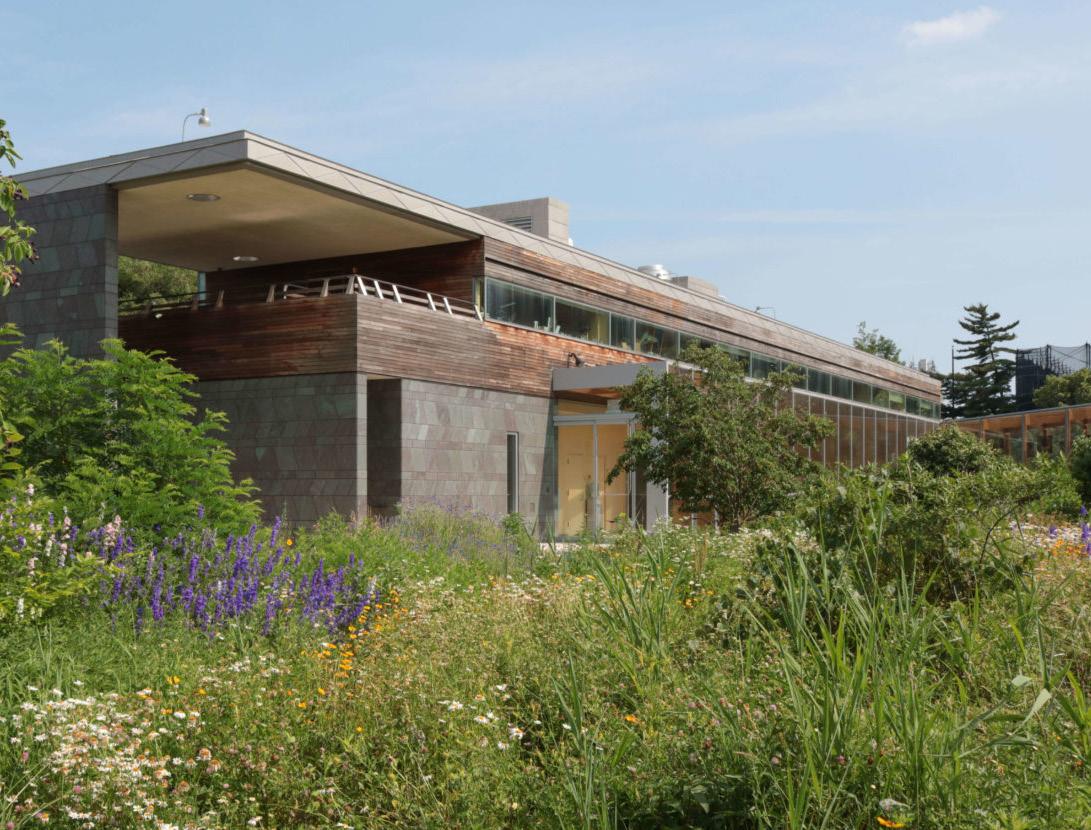
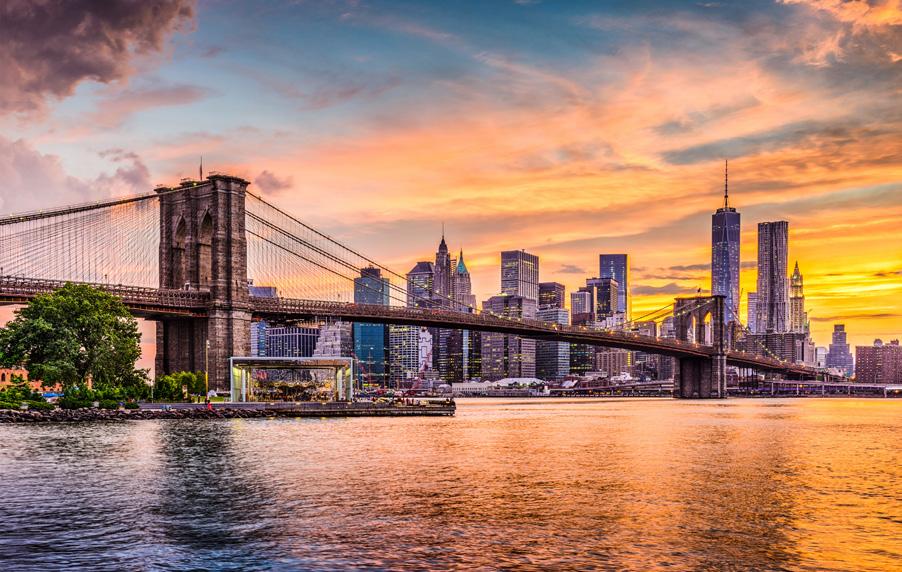

The beauty, prowess, and heritage of the beloved Brooklyn Bridge can never be overstated. Once standing as the largest suspension bridge in the world, thousands of labourers arduously worked on the iconic landmark between 1869 and 1883, many of whom were immigrants from Germany, Ireland, and Italy with roots in Brooklyn to this day.
Derived from a huge industrial complex dating from the early 20th century, Industry City is positioned at the heart of Brooklyn and is an urban metropolis that showcases some of the best and brightest underground creatives the borough has to offer. The 35-acre space is packed with restaurants, pop-up shops, budding entrepreneurs, and bustling outdoor hang-out spots, letting visitors delve deep into its eclectic biuniqueness.
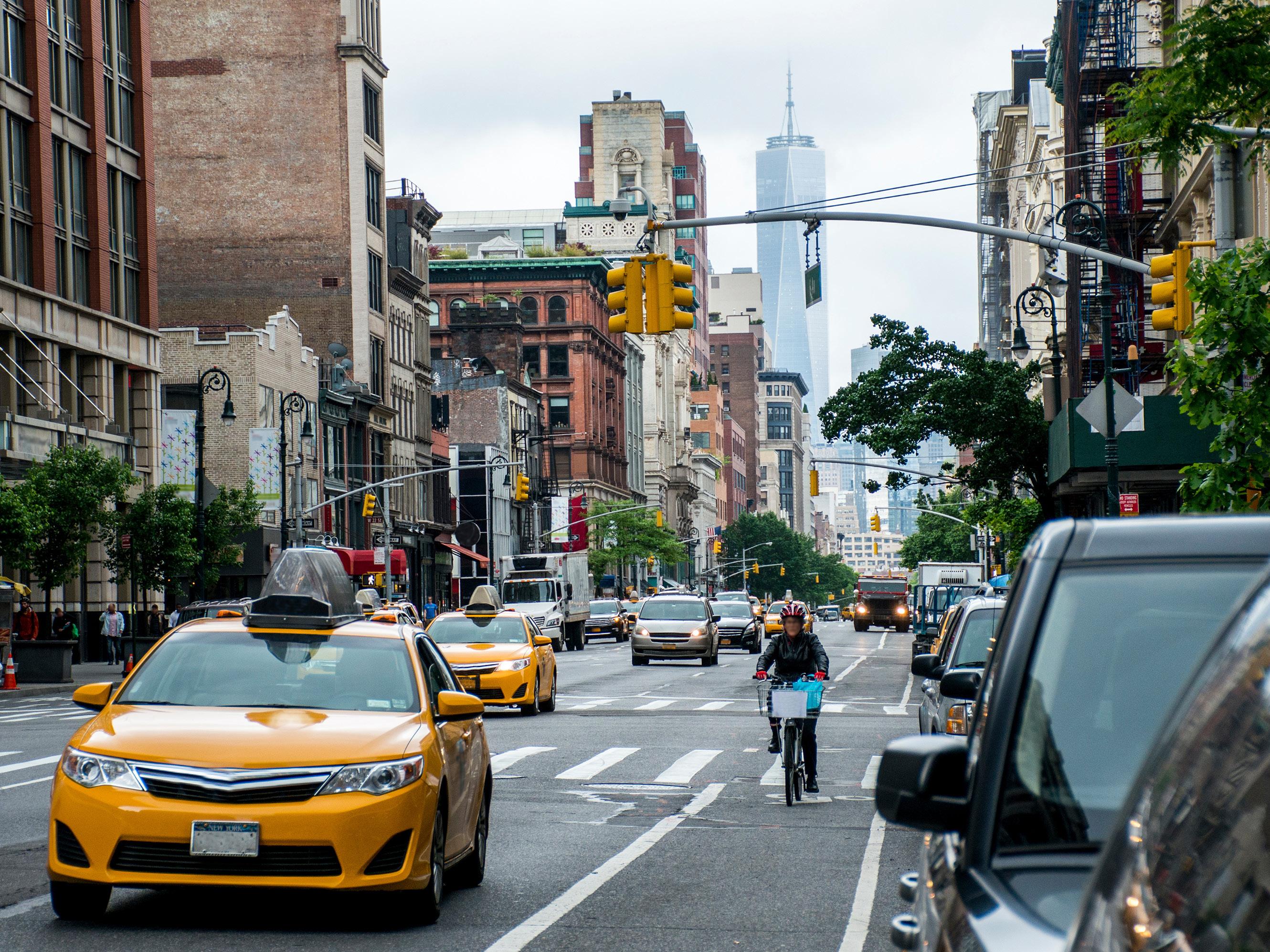
SITUATED IN THE city that never sleeps, travelling around Brooklyn could not be easier. For starters, New York City’s subway system is one of the most comprehensive and easiest to navigate in the world. The extensive network covers Manhattan, Queens, the Bronx, Staten Island, and Brooklyn, making it simple to travel between boroughs and runs at all hours, seven days a week.
If you need help navigating the extensive map and keeping up to date with any delays, download the MYmta app - a lifesaver for any subway riders.
Visitors can also make the
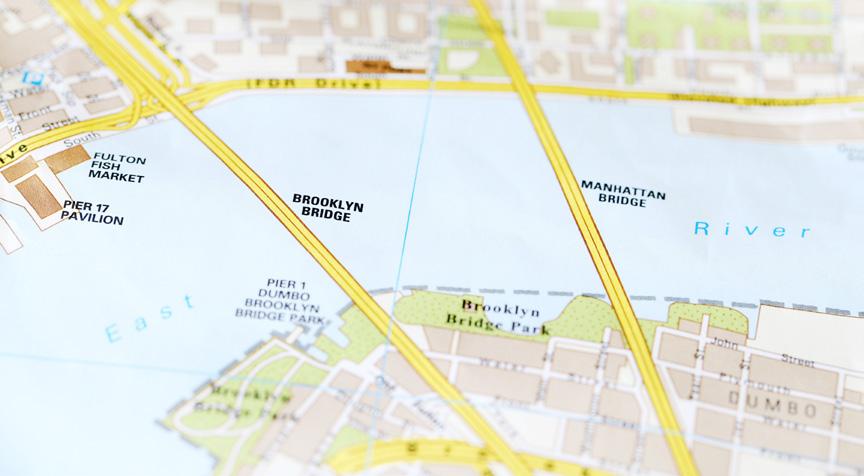
journey with a gentle stroll or bike ride across Brooklyn Bridge, featuring a stunning city skyline and the shimmering waters of the East River. It takes approximately 45 minutes to walk the length of the bridge, giving visitors plenty of time to take in the impressive stature and architecture
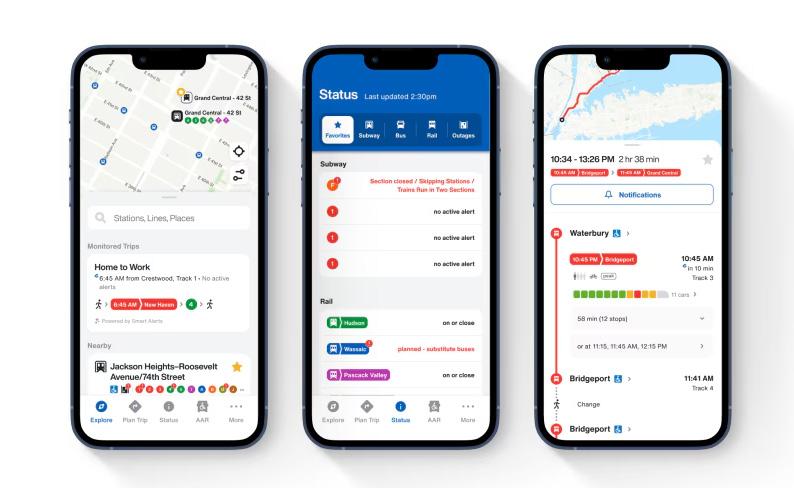
of one of the world’s most impressive structures. The bridge is accessed from Manhattan via a short walk from Brooklyn Bridge–City Hall/Chambers Street subway station.
Due to Brooklyn’s extensive size, which is often underestimated by visitors, using the subway or abundant bus services is advisable if you really want to experience the full potential of Brooklyn. The many bus lines can be accessed with a regular MetroCard or the maps available on the MYmta app.
Finally, fulfil your inner-city dreams by catching an iconic bright green taxi, which can be flagged down on main roads such as Atlantic Avenue or Flatbush Avenue.


